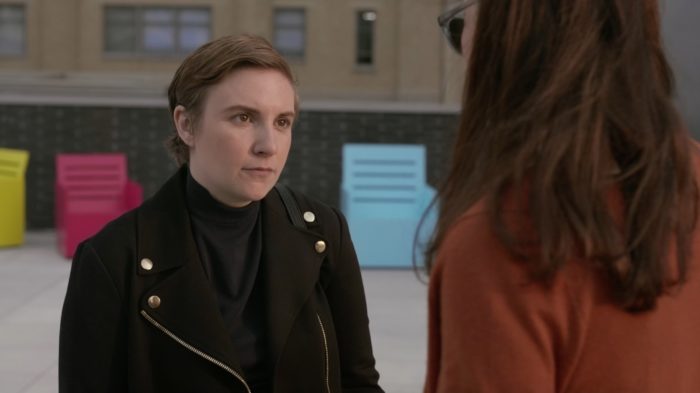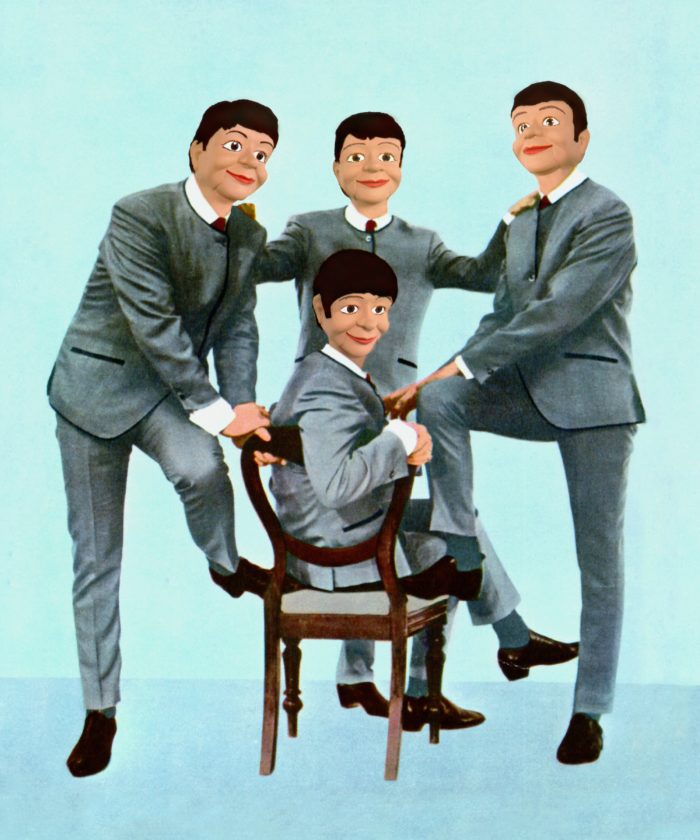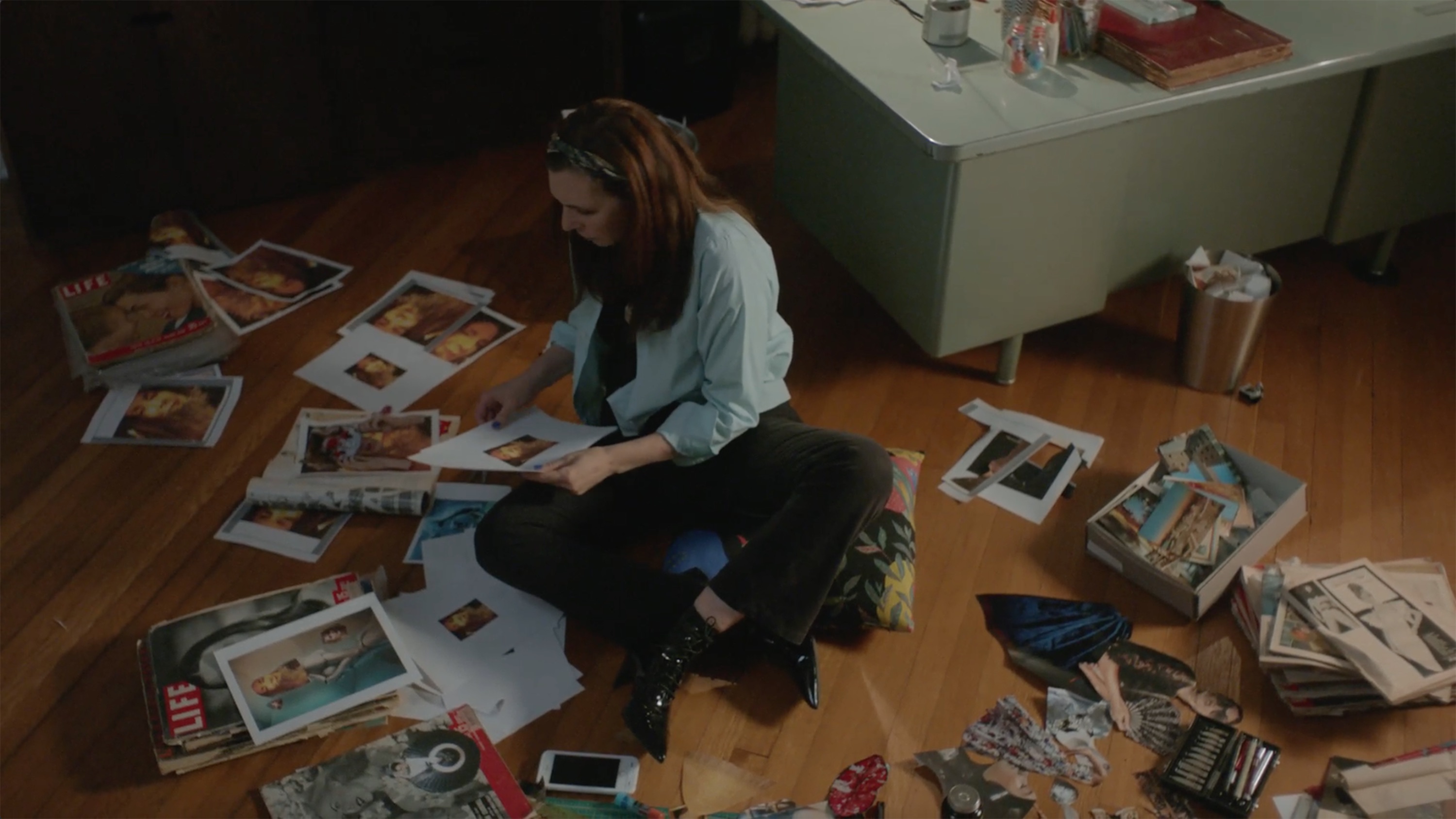
If these bodies of work are Simmons’s past, her present is an artist who refuses to sit comfortably in the framework that she’s built. She upends expectations, most recently by becoming a self-described “young filmmaker” with the release of her first feature, My Art, earlier this year. “My work has been absolutely, decidedly, unapologetically non-narrative, so I didn’t know if I could tell a story,” admits Simmons. “I can’t believe I did it… I’ve felt that in making art too: You’re driven to make something, and then you’re like, ‘Holy Jesus Mary Mother of God, what have I done?’”
My Art came about after Simmons portrayed a caricature of an artist-mother in her daughter Lena Dunham’s 2010 film Tiny Furniture, and wished to see someone like herself, a working artist in her 60s, free of clichés, on screen. Simmons wrote, directed and stars in My Art as Ellie, and tells the story of a woman who prioritizes her artwork while surrounded by men in states of creative stagnancy. She folds them into her life by having them act in her art, which consists of recreations of scenes from films like The Misfits and A Clockwork Orange. While Simmons and Ellie diverge in myriad ways, their practices do have a commonality: they both distort reality so as to let the viewer “suddenly see the world sideways,” says Simmons.

While she plans to make more time-based work, for now Simmons is back in the studio creating still images, splitting her time between New York and Connecticut. In recent years she’s shifted from photographing dolls and miniatures to people and objects at human scale, and this month she will show a new series at Salon 94—one that suggests crafting a narrative film has unwittingly seeped into her photographic process. “The way that I’m framing the show, in terms of what I’m putting in it, tells a story about 2017,” she says. It will include a discombobulated rainbow panorama of objects from 99-cent stores, as well as more positive, personal takeaways from the past year, including photos of friends both new and old and a shot of her dog. Mary Boone Gallery will simultaneously exhibit a collection of Simmons’s works from 1990 to 1994, including her 1991 Clothes Make the Man sculpture, never-before-seen Walking Objects and the 1994 series Café of The Inner Mind, in which thought bubbles appear above male dummies’ heads, revealing their internal musings on food, women and rear ends. They’re works that were timely then and remain so now, thanks to Simmons’s unflinching look at domesticity and gender roles from the ‘50s to present day.

It’s also worth noting that while most of Simmons work encapsulates a feminist critique, she would push back against the notion that her oeuvre is wholly political. “Interpreting all the pictures as though they’re an ongoing cultural critique is a limitation of the way I think about things,” she says. While yes, her images are critical of societal norms, their meaning is also psychological, private and philosophical. When Simmons considers her childhood, for example, which made her question social facades, she does so with “a tenderness and a longing” despite the time period’s many flaws.
“I’m all about the complexity of the human condition,” she asserts, which seems to sum up so much of her image-making. “It’s possible to appreciate my very whitewashed suburban upbringing at the same time as knowing that there’s a surface and then an underworld that’s very dark.”











 in your life?
in your life?

